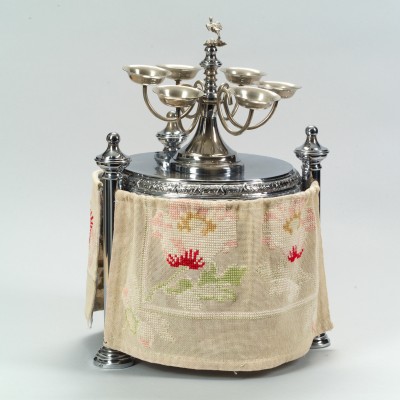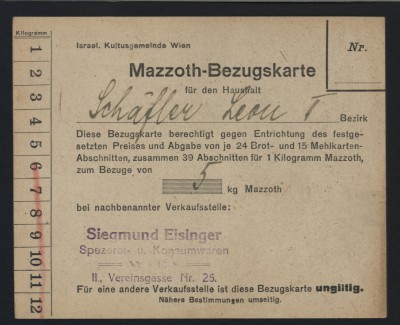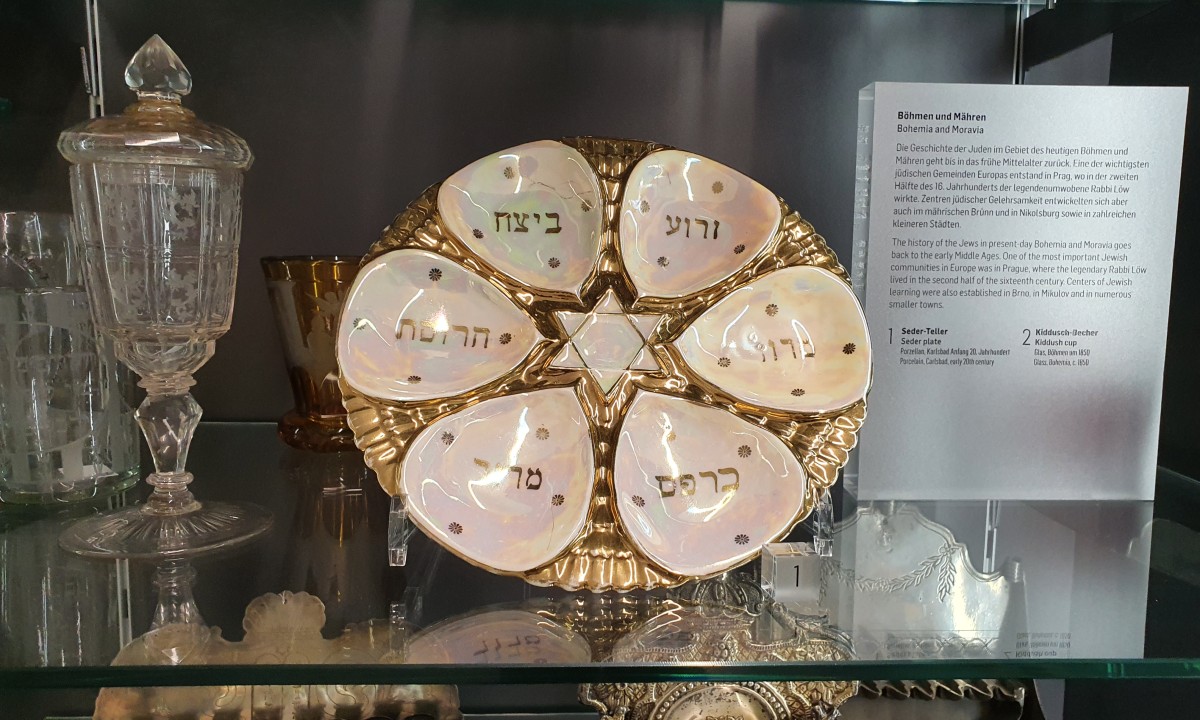Passover and Matzos

A Seder centerpiece combines the six foods – in the bowls at the top – with the three pieces of matzo. Behind the cloth there are three “plate floors,” upon each of which you put a piece of matzo. But why three? The three pieces stand for three sections of the population: the high priests (“Kohanim” in Hebrew), who did the really important things in the temple in Jerusalem. The Levites were the “servants” who helped the priests, and the third group, the Israel, were the people, meaning all very ordinary other people.
During the Seder, the host breaks the middle matzo in two and hides one half, called the “afikoman.” The hidden half then reappears and is eaten before the third cup of wine. In order to keep the children happy and awake, it is their special job to find the hidden piece. Whatever succeeds best! Speaking of wine: four cups of wine must be drunk at the Seder. Four cups because there are four expressions in the Torah for deliverance from slavery. Four cups and four questions: the youngest child asks four questions about the background of the festival. Questions also help against fatigue! And as a slave you didn’t have the time or the right to ask questions. Things look different in freedom!


Speaking of freedom: In March 1918, the First World War had not yet ended, and chaos, misery and hunger prevailed. Despite this, or perhaps precisely because of this, the Jewish Community in Vienna provided its members with unleavened bread. Leon Schäfler received five kilos of matzo with this card. Orthodox Jews do not eat normal leavened bread, rolls, cakes or pizza during the entire Passover week. The leaven is called “hametz” in Hebrew and everything “hametz” must disappear from the house or apartment before Passover – Passover cleaning is what it is called. Just like Easter cleaning. Or spring cleaning.
Chag Pessach sameach! (Happy Passover Festival!)

